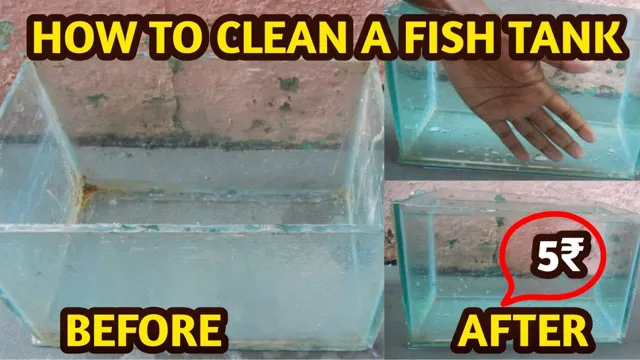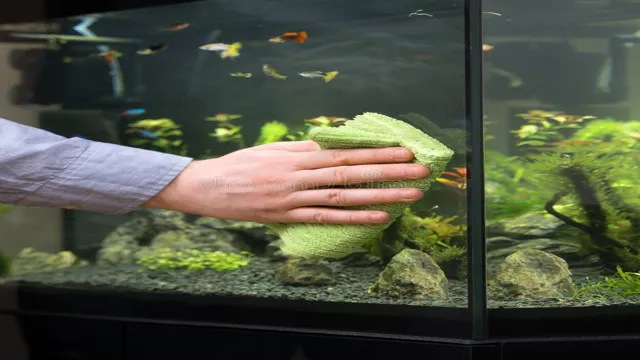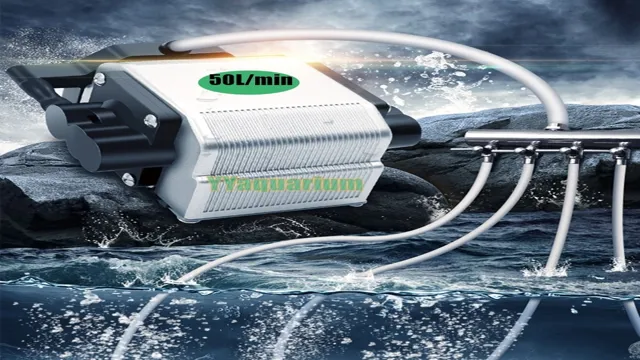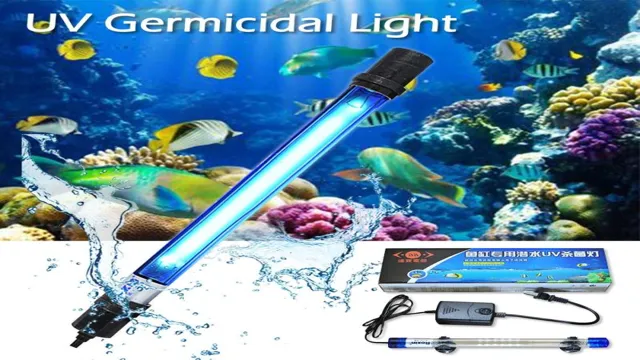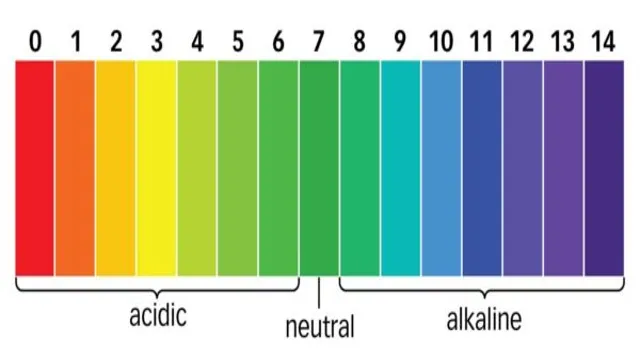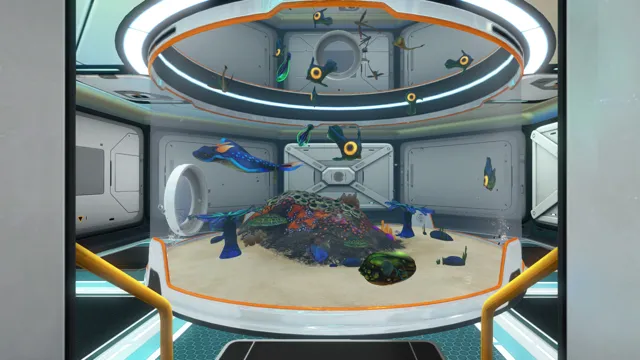Cleaning your aquarium is an essential part of maintaining a healthy environment for your fish. However, from time to time, you may notice unsightly stains on the glass. These stains can be caused by algae, mineral buildup, or even debris from your fish’s food.
They can be quite frustrating, as they can make your aquarium look dirty and detract from its visual appeal. If you’re wondering how to clean stains from aquarium glass, don’t worry, we’ve got you covered. In this blog post, we’ll provide you with some useful tips and tricks to help you get the glass of your aquarium looking crystal clear in no time.
So grab your cleaning supplies and let’s dive in!
Introduction
Aquariums are a beautiful addition to any living space, but they can quickly become unsightly if not properly maintained. One of the most common issues aquarium owners face is stubborn stains on the glass. Thankfully, cleaning these stains is relatively easy with the right tools and techniques.
Start by using an algae scraper or a razor blade to remove any algae buildup or other debris from the glass. Next, mix a solution of equal parts white vinegar and water and spray it onto the affected areas. Let the solution sit for a few minutes before wiping it away with a clean cloth or paper towel.
If the stains are particularly stubborn, you may need to repeat this process a few times. It’s important to never use harsh chemicals or abrasive materials on your aquarium glass, as this can scratch or damage the surface. With some patience and a little elbow grease, you can have your aquarium looking crystal clear in no time.
Why Clean Aquarium Glass?
Aquarium Glass Cleaning If you’re a dedicated fish owner, then you know that keeping your aquarium clean is one of the most important things you can do for the health and wellbeing of your aquatic pets. While regular water changes and filter maintenance are essential parts of this process, many people underestimate the importance of keeping their aquarium glass clean. This is so crucial that it can make the difference between thriving aquatic life and sick fish.
Aquarium glass that is dirty or cloudy not only looks unsightly, but it can also lead to the buildup of harmful bacteria, algae, and other debris that can harm your fish and plants. In this post, we’ll dive into why clean aquarium glass is so important, and the steps you can take to ensure your aquarium always looks its best. So, let’s get started!
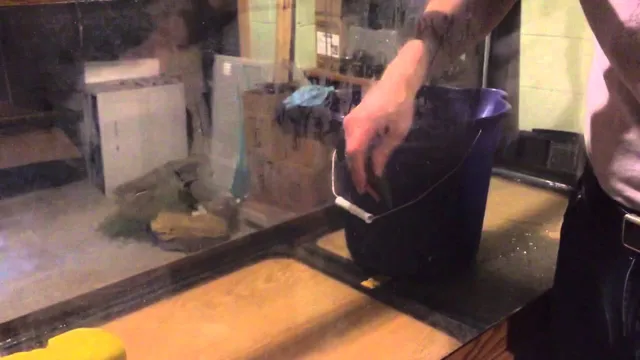
Types of Stains
Stains are an inevitable fact of life, and they can happen to anyone, anywhere, anytime. With so many different types of stains, it can be tough to know how to treat them effectively. From food and drink spills to ink and oil stains, every stain requires a unique cleaning method to get it out effectively.
So, let’s dive into some of the most common types of stains.
Tools and Materials
If you have an aquarium at home, it’s important to keep the glass clean so that you can fully appreciate your fish and other aquatic life. Over time, stains can develop on the glass that can be tough to remove. Luckily, there are a few tools and materials that can make the job a lot easier.
One of the most popular options is a magnetic glass cleaner, which is a device that has a strong magnet on one side and a scrubber on the other. You simply place one piece on the inside of the tank and the other on the outside, and then move the outside piece around to clean the glass. Another option is a specialized aquarium cleaning pad, which is made with a rougher texture that can help remove tough stains.
You can also use a razor blade to carefully scrape away deposits on the glass, but be sure to use caution so that you don’t scratch or damage the surface. With the right tools and materials, you can keep your aquarium glass looking crystal clear for years to come.
Cleaning Solutions
When it comes to cleaning solutions, having the right tools and materials is essential. One of the most important tools is a high-quality vacuum cleaner, which can effectively remove dust, dirt, and debris from all types of surfaces. In addition, microfiber cleaning cloths are a great investment, as they are highly absorbent and effective at removing dirt without leaving streaks or residue. (See Also: How to Dose a Reef Aquarium Manually: Step-by-Step Guide for Beginners)
Other useful tools include a scrub brush, squeegee, and mop. These items can be used to effectively clean hard floors, showers, and windows. When it comes to materials, there are a few different options to consider.
One popular choice is vinegar, which can be mixed with water to create a natural cleaning solution. Baking soda is another versatile option, as it can be used to clean everything from sinks to ovens. Ultimately, the best cleaning tools and materials will depend on your specific cleaning needs and preferences.
Whether you prefer natural cleaning solutions or more traditional cleaning products, it’s important to choose high-quality tools that will help you achieve the results you’re looking for. By stocking up on the right cleaning supplies, you can keep your home looking its best and maintain a healthy living environment for you and your family.
Cleaning Tools
When it comes to keeping our homes clean and organized, having the right cleaning tools and materials is crucial. From a simple broom and dustpan to a high-powered vacuum, each tool plays a vital role in keeping our homes spotless. For effective cleaning, we need to consider the size and layout of our homes, the type of flooring, and the surfaces we need to clean.
A microfiber cloth, for instance, is perfect for dusting delicate surfaces like mirrors and electronic devices, while a scrub brush and a heavy-duty cleaner work best for tackling tough stains on kitchen countertops and bathroom tiles. Investing in the right tools and materials will not only make cleaning easier but also more efficient, saving us time and energy in the long run. So, the next time you’re thinking of giving your home a deep clean, be sure to have the right tools on hand, including a mop, a broom, a vacuum, a squeegee, and a range of cleaning solutions.
Cleaning Process
Aquarium glass can often become stained and cloudy, making it difficult to see the fish and plants inside. However, cleaning it isn’t as hard as one might think. First, start by turning off the aquarium’s filter and heater to prevent any damage.
Next, remove any large debris or algae with a scraper or magnetic cleaner. For stubborn stains, use a specially formulated aquarium glass cleaner or a solution of white vinegar and water to gently scrub the glass. Rinse the glass with water and use a clean cloth to wipe away any excess cleaner or debris.
It’s essential to avoid using harsh chemicals or abrasive materials that can scratch or damage the glass. Remember to also clean the outside of the aquarium glass as it can accumulate dust and fingerprints. A mix of mild soap and water should do the trick.
Clean the edges of the glass with a damp cloth and dry them thoroughly to prevent any water damage. A clean aquarium not only looks better but also keeps the fish and plants healthy and happy. By following a simple cleaning process regularly, maintaining a clear and clean aquarium glass should be easy.
Preparing the Aquarium
When it comes to setting up an aquarium, the first step is to thoroughly clean it. It may seem overwhelming, but taking the time to properly clean your aquarium will ensure a healthy and happy environment for your fish. Start by emptying out the tank and removing any decorations or equipment.
Using warm water and a non-toxic aquarium-safe cleaner, thoroughly scrub the inside of the tank and all equipment. Rinse everything with fresh water to ensure all residue is removed. It may be tempting to use soap or other household cleaners, but these can be toxic to your fish.
Additionally, make sure to clean any gravel or substrate with a siphon to remove any built-up debris. Once everything is clean, you’re ready to set up your aquarium and start creating a home for your fish.
Cleaning the Glass
Cleaning the Glass Cleaning the glass is an inevitable task that comes with owning any glass object. Whether it’s a window, mirror, or vase, over time, dirt, smudges, and fingerprints can accumulate, making the glass look unappealing. The cleaning process for glass is relatively simple, and it doesn’t require any specialized tools; in fact, the only tools needed are a cleaning solution, a microfiber cloth, and a squeegee. (See Also: How to Make Marine Water for Aquarium at Home: A Step-by-Step Guide for Beginners)
To start, mix a cleaning solution of equal parts water and white vinegar. Dip the microfiber cloth into the solution and wipe the glass surface in circular motions. Next, use the squeegee to remove any excess solution from the surface, starting from the top and moving down.
Finally, wipe any remaining streaks with a clean microfiber cloth to leave a shiny and streak-free finish. When cleaning large glass surfaces, such as windows, it’s helpful to work in sections to avoid leaving streaks, and to use a second microfiber cloth to wipe the edges of the glass. With just a little effort, you can keep your glass surfaces looking clean and clear.
Rinsing and Drying
When it comes to cleaning dishes, many people focus on scrubbing away the leftover food particles and forget about the importance of rinsing and drying. However, this step is just as important as the cleaning itself. Once you’ve thoroughly scrubbed the dishes with soap and hot water, take the extra step of rinsing them with cool water to remove any remaining soap residue.
This not only prevents any leftover soap from contaminating your food, but it also helps to prevent mineral buildup on the dishes. After rinsing, make sure to dry the dishes completely to prevent any watermarks or spots from forming. You can use a dish towel or air-dry them on a rack.
By taking these extra steps, you can ensure that your dishes are not only clean but also safe and aesthetically pleasing. Always remember that clean, well-rinsed, and properly dried dishes mean happy dining!
Prevention Tips
Cleaning stains from aquarium glass can be a hassle, especially when you don’t have the right tools and techniques. But with a few prevention tips, you can significantly reduce the number of stains on your aquarium glass. Firstly, avoid feeding your fish too much, as this can cause food particles to float around in the tank and eventually stick to the glass.
It’s also essential to change the water regularly and invest in a good filtration system as they prevent the accumulation of waste and debris within the tank. Additionally, avoid using commercial cleaning products that contain chemicals as they can damage the delicate ecosystem of your aquarium. Instead, use a soft cloth and white vinegar to wipe down the glass.
Finally, make sure that your aquarium lighting is adequate, as too much or too little light can promote algae growth, leading to even more stains on the glass. By following these prevention tips, you can keep your aquarium glass clean and clear, providing the perfect view of your aquatic friends.
Regular Maintenance
Regular maintenance is essential for keeping any machinery equipment or system in top working order, and that includes your HVAC system. Adopting a proactive approach to maintaining your HVAC system can save you a lot of money and hassle in the long run. One of the prevention tips that can help you keep your system running smoothly is changing your air filter regularly.
A dirty air filter can keep polluted air from flowing into your unit and lower the efficiency and lifespan of the HVAC system. Another tip is to have your HVAC system inspected and serviced by an expert technician at least once a year to detect and fix any issues before they escalate. Regular maintenance also aids in enhancing energy efficiency, improving indoor air quality, and reducing the risk of unexpected breakdowns.
Overall, investing in ongoing HVAC maintenance will ultimately save you money and stress while keeping you comfortable, safe, and healthy.
Water Quality Management
Water quality management is a crucial aspect of maintaining a healthy environment for humans and aquatic life alike. One way to prevent water pollution is to practice responsible waste disposal methods. This includes not dumping chemicals and other hazardous materials down the drain or into bodies of water. (See Also: How to Lower Nitrates and Nitrites in Freshwater Aquarium: Tips and Tricks)
Properly disposing of waste in designated areas can significantly decrease the likelihood of water pollution. Another way to prevent water pollution is to conserve water usage by fixing any leaks and avoiding leaving taps running unnecessarily. Conserving water not only prevents pollution but also ensures a sustainable supply of water for future generations.
Overall, preventing water pollution requires a collective effort from everyone, and by practicing responsible waste disposal and water conservation, we can all contribute to safeguarding our water resources for the benefit of all.
Conclusion
In conclusion, tackling stubborn stains on your aquarium glass can seem daunting, but with a little bit of elbow grease and the right tools, you can restore your tank to its sparkling glory in no time. Whether it’s using a scraper, vinegar, or a magic eraser, the key is persistence and patience. So, don’t let those pesky stains ruin your underwater paradise – take charge, get cleaning, and watch your fish swim into a crystal clear world!”
FAQs
What is the best way to clean stubborn stains from an aquarium glass?
You can use a vinegar solution or a commercial aquarium glass cleaner to remove stubborn stains from aquarium glass.
How often should you clean the aquarium glass?
You should clean the aquarium glass at least once a week to prevent the buildup of dirt and stains.
Does using a razor blade to clean the aquarium glass scratch it?
Yes, using a razor blade can scratch the aquarium glass, especially if you use too much pressure or if the blade is dull.
Can you use regular glass cleaner on aquarium glass?
No, you should not use regular glass cleaner on aquarium glass as it contains chemicals that can harm fish and other aquatic animals.
What is the safest way to clean aquarium glass?
The safest way to clean aquarium glass is to use a soft cloth or sponge and a mild cleaning solution, such as vinegar or a commercial aquarium glass cleaner.
How do you prevent stains from forming on aquarium glass?
You can prevent stains from forming on aquarium glass by regularly cleaning the tank, avoiding overfeeding, and using a high-quality filtration system.
Can you use a magnetic aquarium glass cleaner to clean stains?
Yes, a magnetic aquarium glass cleaner can be effective in removing stains from aquarium glass, but you should avoid using it on surfaces that are already scratched or damaged.

